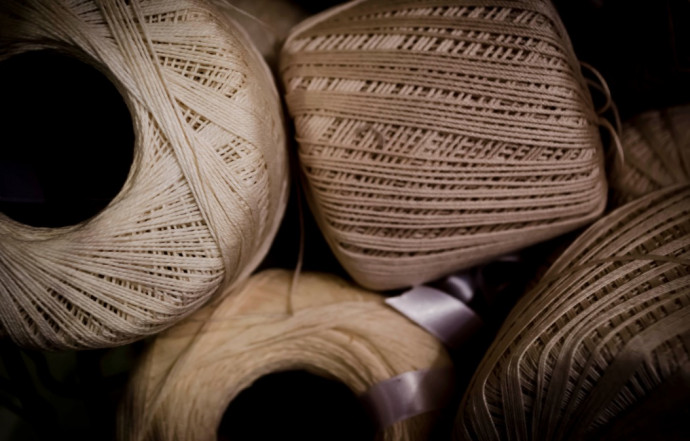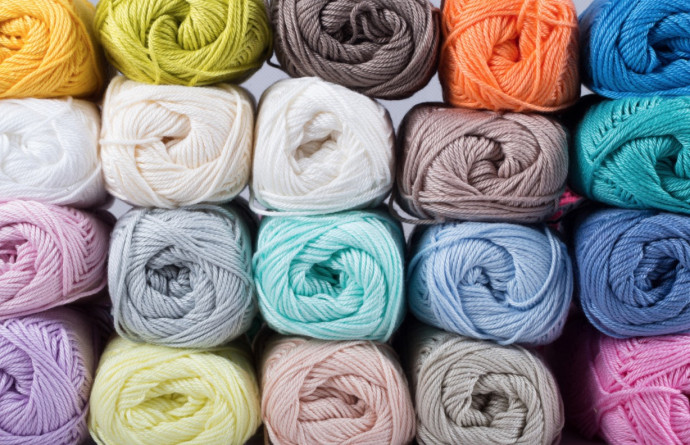Hello crafters! Have you ever purchased the same color of branded yarn to finish a project, only to discover it’s a different shade to the yarn you already have? Did the manufacturer change the color since you last bought the yarn? No, but you will have purchased yarn with a different dye lot number and the resulting difference in color is all part of the dyeing process. As frustrating as this is, it’s an unavoidable part of yarn manufacturing but there are things you can do to avoid it negatively impacting your knitting or crochet endeavours.
1. Does dye lot really matter?

While slight differences in the yarn shade may be so subtle they’re undetectable in ball or skein form, the variation can become more apparent during knitting or crocheting, under different light sources, or after washing. By using yarn from different dye lots the appearance of your finished handmade textiles can be spoiled. Unmatched dye lots are particularly frustrating for crafters because issues usually only arise after hours of work and often at a period of time significantly after the yarn would have originally been dyed, meaning supplier’s stock is likely to be depleted. However, if the yarns are separated by another color, it is probably safe to mix dye lots in the same item.
When purchasing yarn for a project, your best bet is to be sure that all of the same-color yarn comes from the same dye lot. Every yarn color is the result of careful measuring and mixing of pigment until the desired shade is achieved. This color “recipe” is then assigned a unique shade number and every batch of yarn dyed in this color will have the number stamped on its label. The color of some yarns can look very similar under certain light sources, especially if they’re from the same color family, so the shade number is required to differentiate between them post production.
2. How to lessen the impact of different dye lot numbers?

Firstly, you should always hold onto your yarn ball band or label, at least until your project is finished. This way, if for any reason you run out of yarn before completing, you know exactly what shade number and lot number you need to purchase to finish. Some crafters keep notebooks with the brand name, yarn type, shade number, lot number and date of all completed projects listed, should they ever want to revisit them or buy the same color or type of yarn again.
Always buy enough wool for your planned project. It is better to err on the side of caution and buy a little more than you may need in case you decide to enlarge your item, customise it, or add tassels or pompoms. If you are making something in a single color you definitely want to make sure you are purchasing yarn from the same dye lot to avoid seeing any color distinction where you join a new ball of yarn.
Once a batch of yarn with the same lot number is finished, it is no longer available. The next batch of yarn in the same shade will have a new lot number and possibly look or feel slightly different.
3. Can the different dye lots be assigned to specific parts of the item?

The cuffs and collars or sleeves of a jumper or cardigan could be knit or crocheted in one dye lot and the body in another; or you could split the project in half with the top part in one dye lot and the bottom in another; or do the back of your item in the odd dye lot. This would also work for other items such as hats, gloves and scarves. In blankets or cushion covers a border in the odd dye lot, or creating a stripe pattern alternating between dye lots, can be quite effective.
If you want to minimise the impact of mismatched dye lot colors you can use the yarn from both dye lots at the same time by swapping yarn every few rows. By limiting the color changes to smaller sections across the entire item, your eyes will blend the shades together making it more difficult to notice any distinct changes in color.
4. Can the different dye lots be separated by a contrasting color?

It is only when the same color yarn from different dye lots is knit or crocheted right alongside itself that the difference in color is really noticeable. If your pattern could be broken up with a contrasting color that would keep the odd dye lots separate then the change in shade is less likely to be perceptible.
5. Can the stitch pattern be modified?

Working the different dye lot in a different stitch pattern can make the change in color less obvious as the eye will acknowledge a contrast in stitch and texture and focus less on the color.
6. Why are some yarns labeled “No Dye Lot”?

These are synthetic (man-made) yarns. The chemical process allows producers to get exactly the same color results every time they produce a fiber in a particular color.
I found the perfect color, but my yarn store doesn’t have enough skeins from the same dye lot to complete my project. Do I ever dare use different dye lots in the same project?

Try some of these ideas for minimizing problems when using different dye lots:
Separate the different dye lots with a stripe of a different color.
Switch stitch patterns where the dye lots change. Often a difference in texture can hide a slight color change.
Use a stitch pattern that mingles the stitches and rows by working in rows below or over other stitches and thus avoids straight lines of stitches of different dye lots.
Make the odd dye lot a separate element, such as a pocket, collar, or border.
Work a chain stitch or other surface embellishment over the spot where the dye lots meet.
How do I know if the yarn colors I’ve chosen will look good together?

In the store, hold them together and squint. Try to do this in daylight, not under fluorescent lighting. At home, wrap each of the colors around a white index card side by side, in the same proportions that you will use them in the finished project. Look at the card critically. Are the colors pleasing together or is one of them jarring? Can you put them next to each other in any order? Is there one that shouldn’t be adjacent to another? If you are satisfied with the results on the index card, try all the colors together in a swatch.
You may also want to learn more about color theory. Entire books have been written on the subject, and it can be a lifelong study. The short answer is, if you like the colors together, that's what really matters.









